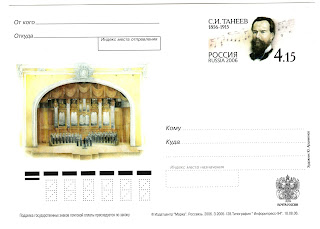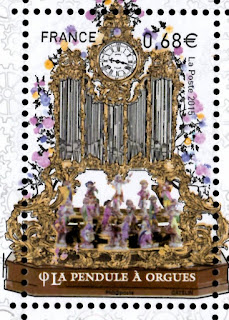This cover is related to the Jomala Kyrka in the Aland Isands, near Finland. The stamp (Scott 8) shows a nice exterior shot of the
historic church. The cachet however shows a somewhat enigmatic representation of the church interior. A little digging demonstrated for me that the cachet includes a bit of the organ in this famous church.
There is an annual
organ festival in the Alands, I learned. Looking at the program for 2015 and cross-referencing artists and images I found what to me seems to be the organ inside the church shown on the stamp. Important markers for me were the historic crucifix, and the unique light fixture. I wish the photo below included the remarkable ship model hanging from the ceiling shown in the cachet! Lines in the cachet convince me that it includes a portion of the organ.
My friend Mark Jameson gave me this FDC. It's dated August 26, 1988, the day the stamp was issued in Mariehamn, Aland Islands.
The Aland Islands Organ Festival site was quite helpful. Under "ovrigt" near the bottom of the left column click on "orglarna" and scroll down the center section just a bit to get details about the Jomala Church's instrument.





























